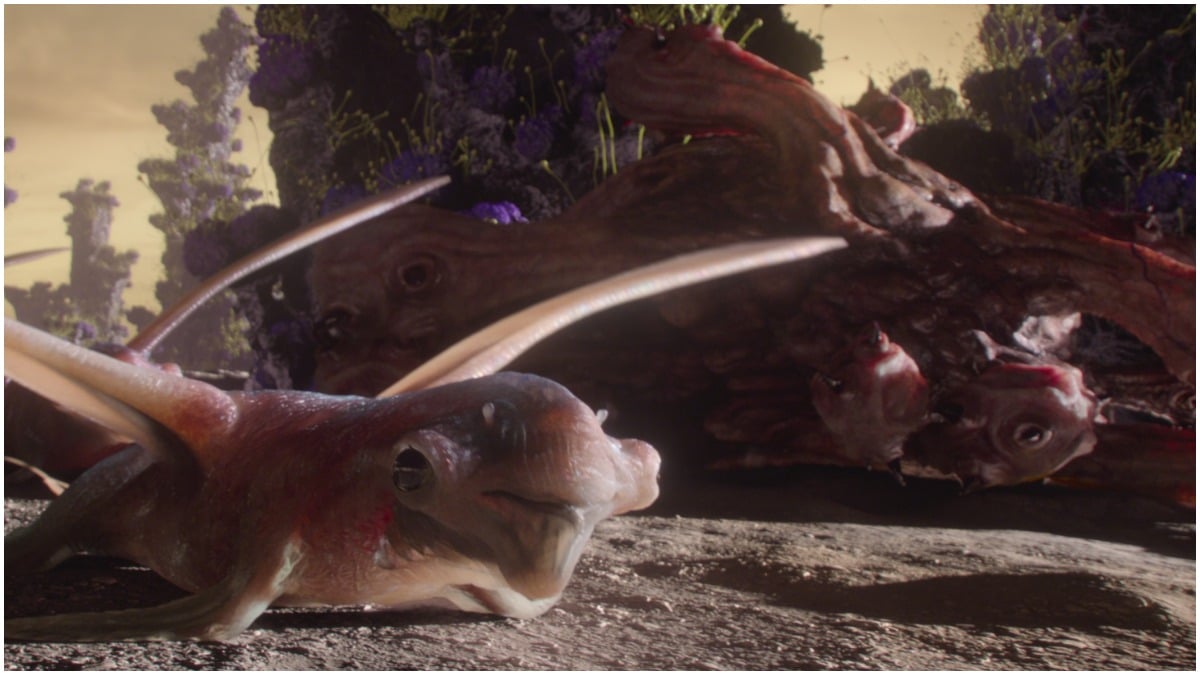
Alien Worlds is a new four-part science fiction docuseries that premiered on Netflix on December 2.
The series, narrated by actress Sophie Okonedo, uses CGI to visualize what alien worlds and alien life might look like.
Since the 1990s, astronomers and astrophysicists have discovered thousands of alien planets orbiting around alien stars in our galaxy. These alien planets, called exoplanets, have led people to imagine what alien worlds and alien life might look like.
Scientific researchers have also been trying to figure out how their theories about life on Earth might apply to alien environments.
Netflix’s Alien Worlds sees scientists conceptualizing alien life through scientific theories based on life and Earth.
However, the creators of Alien Worlds also use their imagination and ideas borrowed from science fiction to construct imaginative alien worlds.
According to Netflix’s tagline for the show:
“Applying the laws of life on Earth to the rest of the galaxy, this series blends science fact and fiction to imagine alien life on other planets.”
Is Atlas planet on Alien Worlds real?
The first episode of Alien Worlds introduces viewers to a planet called Atlas.
The series makes it clear Altas is an imaginary planet, used to illustrate how different conditions on alien exoplanets could affect the type of life that emerges through evolution.
The series imagines Altas’s planet as a world where gravity is much stronger than on Earth and the atmosphere denser.
“Imagine a world double the size of Earth, with twice as much gravity. This is Atlas,” Sophie says. “How would life adapt to such a world?”
The series then creatively conceives the type of life forms that might evolve and adapt to Atlas’s unique conditions.
Although gravity on Atlas is strong, large colonies of seeds stay afloat in the atmosphere because the densely packed air molecules create a thick and buoyant atmosphere that supports them.
Viewers are then introduced to imaginary winged herbivorous life forms called Sky Grazers that feed on the floating seeds. Due to Altas’s gravity, Sky Grazers are massive but stay airborne because Atlas’s dense atmosphere supports them.
The episode also introduces floating predatory insects that dive like Falcons from above to attack the Sky Grazers.
Could exoplanet Atlas be real?
In February, researchers at the University of Cambridge in the U.K. identified K2-18b, an exoplanet twice Earth’s size that could have conditions favorable for the emergence of life, despite having a stronger gravity than Earth.
K2-18b is 124 light-years away and orbits its star at a distance where temperatures could allow for liquid water to exist on the surface.
Although we don’t know yet whether exoplanets like K2-18b have Earth-like life on them, scientists believe they could exist.